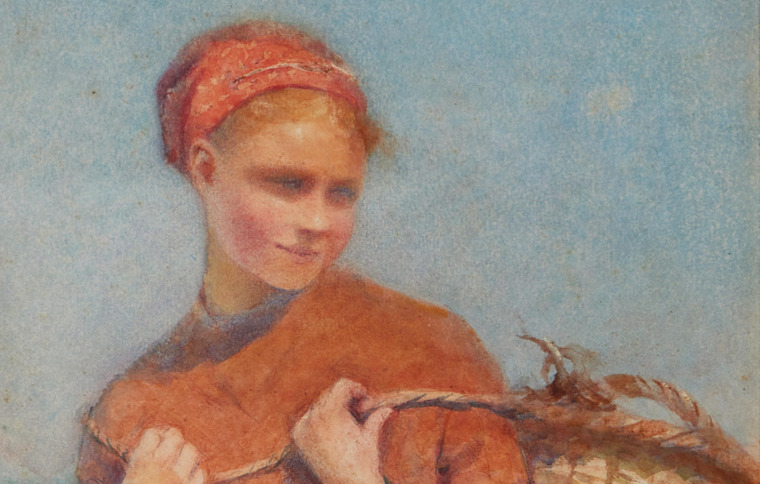Hector Caffieri, Young Fisherwoman with basket | Fine & Decorative Interiors: 7th March 2023
Hector Caffieri, Young Fisherwoman with basket, watercolour, signed
Hector Caffieri’s Young Fisherwoman with basket was our cover girl for the auction Fine & Decorative Interiors held on 7th March 2023. Here we take a closer look at this striking watercolour and the life of the artist.
——————————————————————-
Hector Caffieri (1847-1932) took inspiration from the men and women working in fishing industries and from the early 20th century he was based in Boulogne-sur-Mer, France’s largest fishing port. Caffieri had in fact painted coastal scenes prior to his re-location and had exhibited a number of these works throughout the 1890s. In a review of an exhibition of his watercolours, published in the Glasgow Herald in November 1900, the critic wrote of Caffieri, ‘He uses colour unreservedly…and almost any one of his drawings taken at random would exlicit the exclamation Oh how pretty!’. The show, held at the Continental Gallery, located at 157 New Bond Street, London, featured scenes from Boulogne’s flower market, its quay and harbour and beaches during the Summer dotted with bathers and children paddling. Recently The Pedestal sold Caffieri’s Mother and child on the shoreline – the charming, tender work depicts one of his favoured scenes.
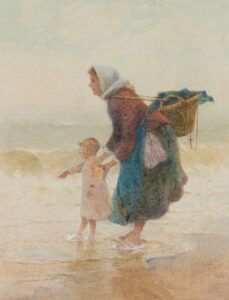
Hector Caffieri, Mother and child on the shoreline, watercolour and body colour, signed | Sold at The Pedestal
Young Fisherwoman with basket, a watercolour, is an interesting example of the subject matter for which he is best known. The painting is a bright, luminescent study of the elements – although the fisherwoman in question bears a somewhat subdued, resigned demeanour and looks away from the viewer – a large proportion of the watercolour is dedicated to the clear sky, which ranges in intensity through an almost exclusive use of the colour blue liberally used at the top of the work down to the introduction of warmer shades to convey the distance of the horizon. A light breeze plays across the young woman’s apron and the ocean in the foreground is choppy, through the use of vigorous brushstrokes and various hues, many of which are not blue.
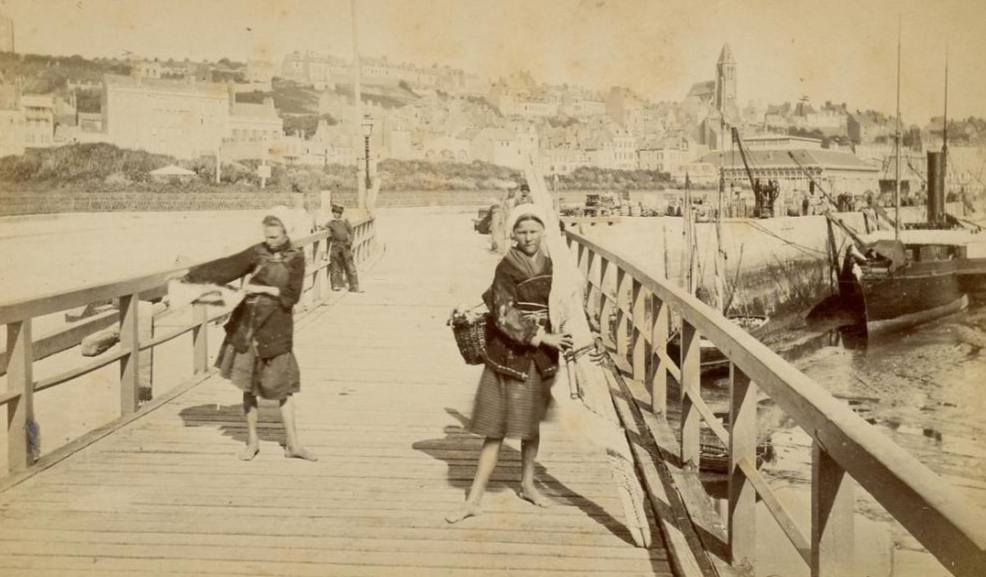
Boulogne-sur-Mer, France, c. 1880
Hector Caffieri was born in Cheltenham, the second of eight children, his father was a wine merchant of French descent and the family had settled in England temporarily. Caffieri was part of a generation of young British artists who travelled to Paris in the 1870s and 1880s in order to refine their artistic education. In Paris Caffieri studied under three distinguished painters and educators: Gustave Boulanger, Léon Bonnat and Jules Lefebvre. Boulanger (1824-1888), a figurative painter whose subjects were derived from Classical and Oriental stories and myths was a highly influential teacher, combining this role with his art practice over the course of many years. His own style inevitably waned at the turn of the century as Impressionism along with other art movements prevailed. Léon Bonnat (1833-1922) was one of the leading artists of the era, as a teacher he advocated an approach which sat between a high academic finish, as seen in the works of Boulanger, and the Impressionists, with their generous use of colour and focus on overall effect rather than detail. Bonnat’s impressive list of students included John Singer Sargent, Georges Braque, Edvard Munch and Henri Toulouse-Lautrec. In 1870 Jules Lefebvre was appointed professor at the Académie Julian and was also awarded the rank of Officer, under the Order of the Légion d’honneur. Lefebvre was primarily a figure painter, with many of his works featuring single figures of beautiful women, although he won the prestigious Prix de Rome in 1861 with The Death of Priam an oil on canvas portraying the scene from Virgil’s Aeneid.
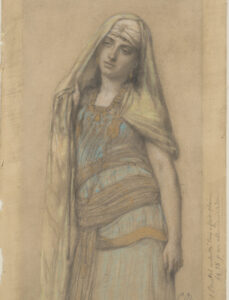
Gustave Boulanger (1824-1888), Arab Woman, black chalk, blue, yellow and white pastel, shell gold with graphite, 1845-88 | Boulanger’s Orientalist works date from his first visit to Algeria in 1845 and he returned to North Africa several times throughout his career | Metropolitan Museum of Art, New York
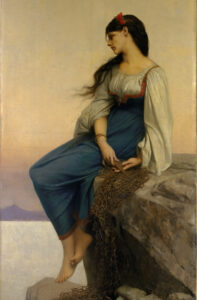
Jules Lefebvre (1836-1912), Graziella, 1878, oil on canvas | The work depicts the heroine of Alphonse de Lamartine’s popular tale, first published in 1849. Graziella is the daughter of a Neopolitan fisherman and she is portrayed mending a fishing net whilst gazing at Mount Vesuvius glowing in the distance | Metropolitan Museum of Art, New York
On his return to England Caffieri was to regularly exhibit at the Royal Academy, the Society of British Artists and the Royal Institute of Painters in Watercolours. When based permanently in Boulogne-sur-Mer he became an active member of the Société des Beaux-Arts et des Arts Décoratifs du Boulonnais and participated in its annual exhibitions until 1925, Boulogne was a popular location with Victorians, and as early as 1856 over 7,000 British people were noted as living there. Caffieri maintained regular contact with the London art world where his work was popular and its market strong. His career and subjects coincided with the endeavours of the Newlyn School, the group of artists had established their colony in Cornwall in the 1880s and their highly popular works also featured the everyday activities of local people.
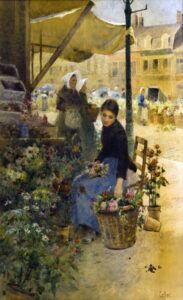
Hector Caffieri, Flower Market, Boulogne, watercolour on paper | Russell-Cotes Art Gallery & Museum, Bournemouth
Caffieri’s watercolours of Boulogne are held in a number of UK galleries, notably, Flower Market, Boulogne, in the Russell-Cotes Art Gallery & Museum, Bournemouth, as well as overseas, in the example of Early morning, Boulogne, a busy quayside scene from the 1890s in the Art Gallery of NSW, Australia.

The blue plaque placed in 1986 at 21 Prestbury Road, Cheltenham, where Caffieri was born
